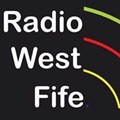Story
Whether you're looking for a brand new FM Radio Antenna or a replacement for an old one, there are a number of things to consider before you purchase. These include polarization, impedance rating, cable length, and the encoding type.
Impedance rating
Getting the best signal reception possible can be aided by a good antenna. A VHF FM dipole is a simple device to make, using a few commonly available materials. This antenna also offers wide bandwidth, which improves the quality of your radio reception.
A typical dipole antenna is comprised of two poles, each of which has a length of about 75 cms. It is also possible to shorten an antenna to achieve a higher resonant frequency.
There are many types of dipole antennas, including a half wave, which has legs that are about quarter wavelength long. They are usually used for reception only. The impedance of a dipole varies with operating frequency, dipole length, and surroundings.
Polarization
Depending on the location of the transmitter and receiver, the radio antenna polarization can vary. The main types of polarization are horizontal, vertical and circular. Selecting the right type of polarization for your needs can provide you with several benefits.
For radio communication, vertical polarization is more commonly used for wide-distributed mobile units. Circular polarization also has advantages for propagation. In particular, it can overcome the fading caused by changing orientation.
Horizontal polarization, on the other hand, is standard for VHF/UHF SSB radio. In general, it's also the preferred polarization for FM radio. In fact, a vast majority of listeners use this polarization.
In addition, most two-way Earth to Earth communications above 30 MHz are conducted using vertical polarization. This allows a greater portion of the transmitted power to be radiated close to the surface of the earth. This is especially convenient for automobiles. However, this polarization is not ideal for long-distance radio communications.
Cable length
Choosing the right cable length for an FM radio antenna is important. A shorter one will help you to get a high-quality signal, while a longer one will be more susceptible to interference. In addition, the type of connector will impact signal loss.
There are several different kinds of coaxial cables. The quality of the cable is influenced by the insulator's magnetic permeability. In general, higher quality coaxial cables will have less signal loss. A low-loss, flexible broadband cable is often used for WISP applications, while a low-loss, closed-cell polyethylene dielectric low loss flexible cable is best for WiFi frequencies in 2.8 and 5-6 GHz.
The dBm (dot-com) is the metric most commonly used to measure the signal strength of a device. The signal strength is impacted by the length, quality and type of connector used.
Censsa
Using a Censsa FM radio antenna is a great way to get the best of the airwaves without having to resort to a transmitter located far away from your destination. An efficient antenna can also be a great way to mitigate interference. To get the most out of your FM signal, you may want to consider a multi-antenna system. This can be accomplished by colocating two transmitters or simply pairing one signal with another.
The most efficient way to accomplish this feat is by using a broadband antenna with an array of multiple filters and beamforming elements. This results in a high-efficiency Censsa FM radio antenna with multiple bandwidths and a wide-open frequency range.
Bingu
Whether you're looking for a good quality FM antenna to boost your AM radio's signal strength, or you're interested in a budget option, you'll find a model that fits your needs with the Bingu FM radio antenna. This brand offers a variety of affordable options that are easy to install, and come with a few premium features.
This is a great choice if you're looking for a high quality FM antenna that's easy to install and comes with a 1-year warranty. The Shakespeare 5420-XT is a heavy-duty antenna that's rated for 93 ohms, and has a cable length of 4 feet. It's compatible with most FM radios, and is also a great value for money.
